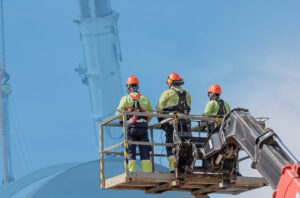A report by the HSE relating to potentially hazardous atmospheres within storage containers arriving at ports and distribution centres across Britain demonstrated concerns that workers were entering the confined space of freight containers without proper controls due to a failure of the industry to recognise containers as confined spaces. The report is based on research at six ports and two distribution centres between 2017 and 2019.
Overall the research found that conditions in containers varied widely and the hazard they presented was often based on the contents, condition, and the length of time they had been in transit. However dangerous atmospheres were found in many containers with the lack of ventilation resulting in dangerously low levels of oxygen within the containers after transit.
On top of a general lack of oxygen the actual cargo within the container can create toxic conditions dangerous to workers. Fumigants are often used in containers to control potential pests especially with goods such as foodstuff, wood and textiles which could be damaged heavily by pests. While these containers are required to have been labelled and ventilated prior to the cargo leaving port this is not always the case and there is a chance the goods will have absorbed the fumigants even if ventilation has occurred.
Similarly carbon dioxide has become an increasingly present danger within cargo containers. When shipping wood pellets, used as an alternative form of fuel, in containers there is a danger that the pellets undergo oxidisation and produce carbon monoxide and carbon dioxide. The conditions in containers can become deadly, especially when mixed with the oxygen depletion and the lack of ventilation. Without proper controls these conditions could be result in potential harm to works including asphyxiation and ill health. In fact there have been cases of workers being killed when entering cargo holds and containers across Europe including Netherlands, Sweden, and Germany.
Thankfully the research report found that the six ports did have effective control measures in place. These included workers being trained on the potential risks, and workers testing for hazardous substances within the atmospheres of the containers. However at the two distribution centres the same controls were not found. The systems of work at the distribution centres were labelled as ‘inadequate’ by the researchers. The HSE stresses that these results are a small sample size and cannot be considered as representative of the entire distribution sector, but they will use the findings to inform and engage with the distribution centres and others within the distribution sector.
If you would like to receive information about risk management, please use the form below.

New rules for providers of social housing in England

Small but mighty – working safely with nanomaterials

Do you have a MEWP rescue plan?

Changing the asbestos control regime

HSE Launch Motor Vehicle Paint Spraying Campaign
